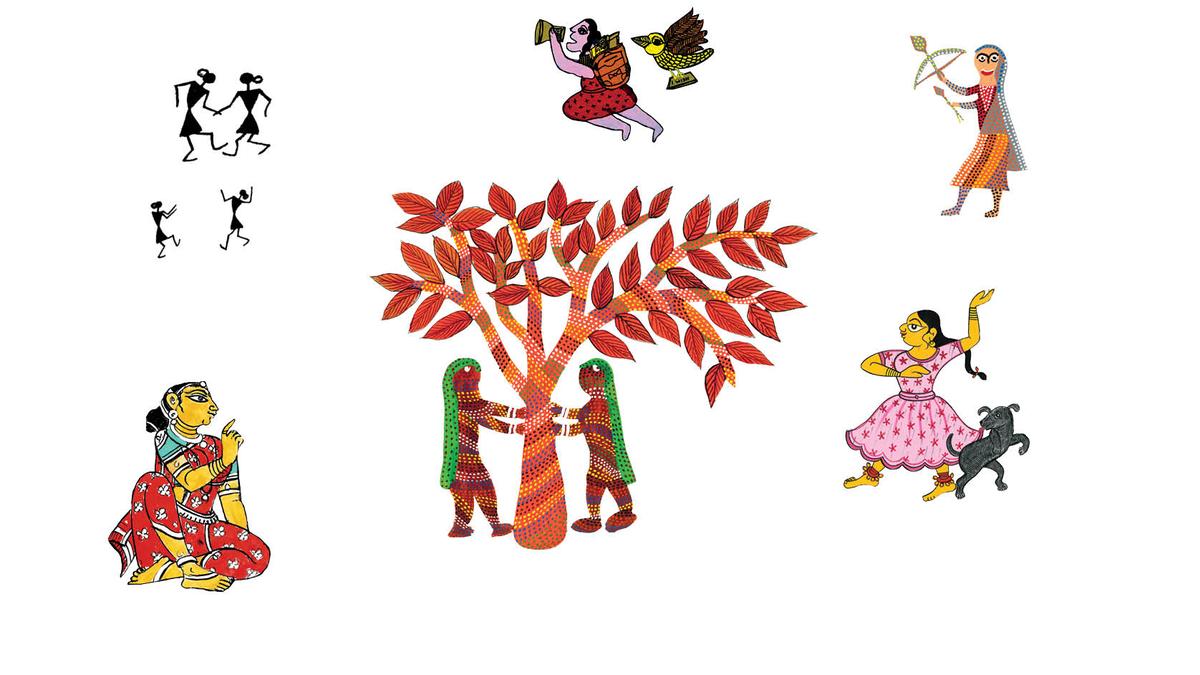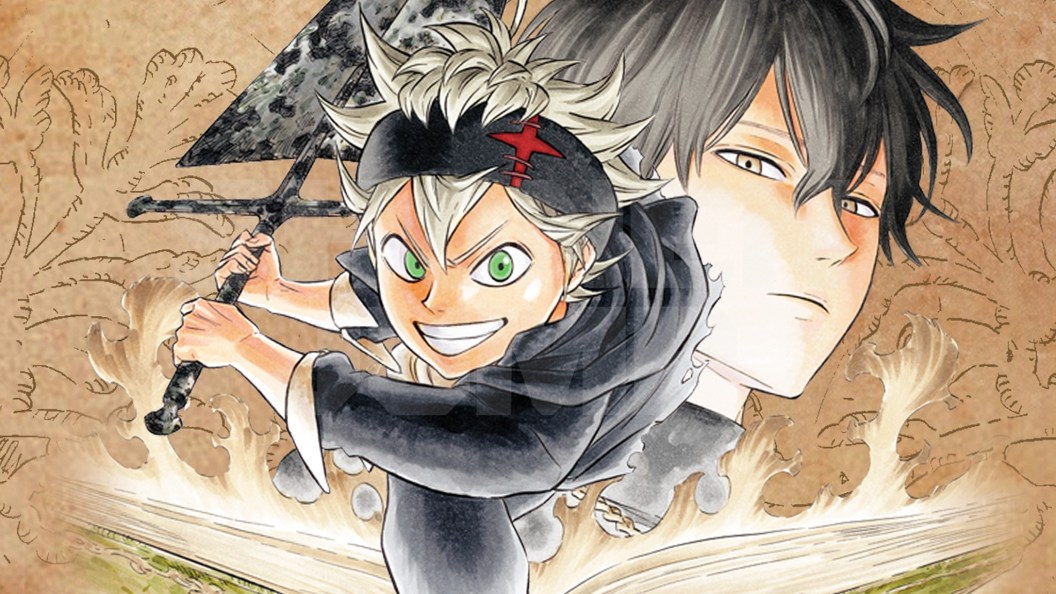What happens when indigenous women artists from across India come together to share their dreams and aspirations? They create art that tells their stories, and what they hope for all women: access to education, the space to nurture dreams, build strong female friendships, and much more. An artist residency in Bengaluru last year brought together six such artists — Gitanjali Das, Japani Shyam, Kamta Tahed, Kritika Joshi, Lado Bai, and Minakshi Vayeda — and their artworks have now gone into What I Want , a book by Pratham Books. Spotlighting art forms such as Gond, Pithora, Bhil, Warli, phad, and pattachitra, the book has each artist sharing their one ‘want’.
Artwork by Lado Bai depicting two women protecting a tree | Photo Credit: Lado Bai For Warli artist Minakshi Vayeda, her “want” was ‘the solidarity of female friendships, where we can rely on each other’. Beautifully illustrated with women figurines working, playing and dancing together, the artist says she drew from her everyday life in the village. “Women are a part of every activity: be it making art together, meeting at weddings, or conversations with neighbours.

At the workshop, we were asked to think about child-friendly themes and I was instantly drawn to friendship as it is the closest to my heart,” says Minkashi, who is based in Ganjadgaon, Maharashtra, adding that the painting was done on paper, with a cow dung base. Minakshi Vayeda’s art depicting female friendships | Photo Credit: Minakshi Vayeda “Although most artists may have stories to tell, we get them illustrated by someone else,” says Canato Jimo, illustrator and art director at Pratham Books. “We thought of getting these artists together for a workshop, and get them to tell us their story in any form,” he says, adding how “women artists don’t get noticed as much as their male counterparts”.
Japani Shyam’s Gond artwork themed on ‘Assert’ | Photo Credit: Japani Shyam At the three-day workshop in March 2024, the artists were taken for a screening of Lapaata Ladies , followed by days of developing ideas, sharing stories, and reading. “It was the first time we had such a workshop, and it was a great learning experience for us. We got an insight into each of their art forms and intricacies,” says Canato.
“We sat down and listened to them. All of them had something specific, passionate to talk about,” he says, adding how while the artists were aware that the workshop would culminate in a book, there was no specific brief, giving way to an “open, organic process”. After rough ideas were discussed, the artists were given a couple of months to send their final artwork and text.
Kritika Joshi’s artwork depicting a young girl dancing in front of the mirror effortlessly, and her parents noticing it and giving her a pair of ghungroo | Photo Credit: Kritika Joshi Kritika Joshi, a 30th-generation Phad artist, was the youngest of the six artists. A graduate of the Indian Institute of Crafts and Design in Jaipur, she is known for Phad paintings on fabric and paper that use earthy shades made with stone. “I chose the theme ‘Nurture’ to showcase how parents need to develop their child’s natural skillset.
My art depicts a young girl dancing in front of the mirror effortlessly, and her parents notice it and give her a pair of ghungroo (anklets). The child is overjoyed, and seen dancing in the rain with her dog,” says Kritika, who enjoyed her time at the residency. “All the other women were married, and had stories to share about marriage, children, etc.
It was interesting to hear about their dreams, and what they have achieved.” Kamta Tahed’s Pithora artwork depicting ‘Play’ | Photo Credit: Kamta Tahed Akin to award-winning Bhil artist Lado Bai, the oldest from the group at 58 years. Known for her artwork that takes inspiration from her natural surroundings, village life, rituals, and festivals.
For What I Want , Lado Bai chose to theme her art on ‘Protect’, depicting two women protecting a tree from being cut. “If we cut the jungles, how will we live?” says the artist, adding how trees are protected in her town, Jhabua in Madhya Pradesh. “It took me five days to finish the painting with acrylic paints on canvas.
” Priced at ₹80, What I Want is available on prathambooks.org, and storyweaver.org.
in Published - April 28, 2025 11:21 am IST Copy link Email Facebook Twitter Telegram LinkedIn WhatsApp Reddit The Hindu Weekend / bengaluru / books-children / arts, culture and entertainment / crafts / painting.
Entertainment

What I Want spotlights six indigenous women artists and their hopes for a better tomorrow

In this new book, six indigenous women artists share their dreams with artworks depicting female friendships, education for all, and more















